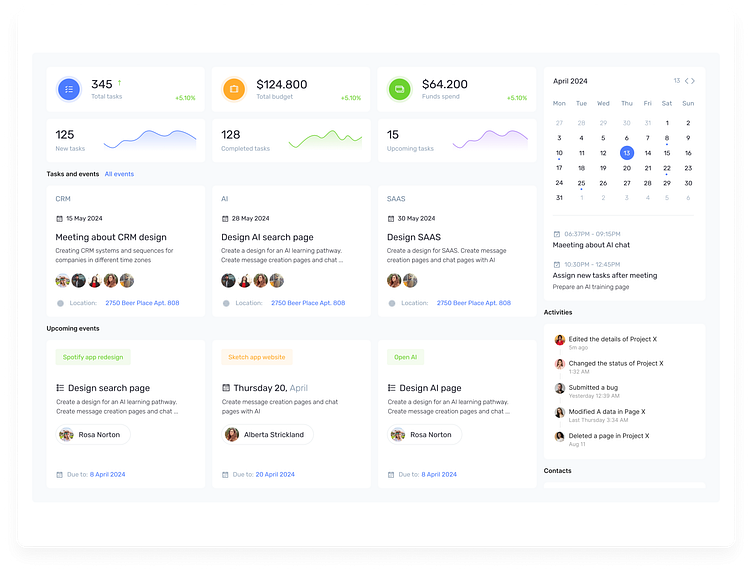Dashboard Task Statistic | Analytics
A dashboard for analyzing advertising campaigns is a crucial tool for marketing agencies for several reasons:
1. Real-time Performance Monitoring: Dashboards provide real-time insights into the performance of advertising campaigns. Marketing agencies can monitor key metrics, such as click-through rates, impressions, conversion rates, and return on investment (ROI) instantly. This enables timely decision-making and adjustments to optimize campaign effectiveness.
2. Centralized Data Visualization: Dashboards consolidate data from various advertising platforms into a centralized visual display. This streamlines the analysis process by presenting data in a comprehensible and unified manner, allowing marketers to quickly grasp the overall performance and identify trends.
3. Goal Tracking and KPIs: Marketing agencies set specific goals and key performance indicators (KPIs) for their advertising campaigns. Dashboards help in tracking these goals, providing a clear overview of whether the campaigns are meeting the defined objectives. This facilitates goal-oriented strategies and enhances campaign efficiency.
4. Cost Monitoring and Budget Management: Ad campaign dashboards assist marketing agencies in monitoring advertising expenses across different platforms. By visualizing costs alongside performance metrics, agencies can manage budgets more effectively, ensuring optimal allocation of resources and preventing overspending.
5. Client Reporting: Dashboards simplify the process of client reporting. Agencies can generate visually appealing and easy-to-understand reports, showcasing the impact and outcomes of advertising efforts. This transparency builds trust with clients and facilitates effective communication regarding campaign performance.
6. Data-Driven Decision Making: Analyzing advertising campaigns requires making informed decisions based on data. Dashboards provide actionable insights that empower marketing professionals to make data-driven decisions promptly. This agility is crucial in the dynamic and competitive landscape of digital marketing.
7. Customization for Specific Metrics: Different campaigns may prioritize different metrics based on specific objectives. Dashboards allow customization to highlight and analyze the most relevant metrics for a particular campaign, ensuring a tailored approach to analysis.
8. Competitive Analysis: Marketing agencies can use dashboards to compare the performance of their advertising campaigns with competitors. This competitive analysis aids in understanding industry benchmarks, identifying areas for improvement, and staying ahead in the market.
In summary, a well-designed dashboard for analyzing advertising campaigns is indispensable for marketing agencies as it provides a centralized, real-time, and customizable platform for monitoring, analyzing, and optimizing the performance of their campaigns.
Don't forget to press "L" if you enjoy watching this ❤️.
You can read my article on creating a "UX philosophy or who are UX Researcher"
Get in touch with me:
Behance | LinkedIn | Instagram
📩 Reach me at: linc.effect@gmail.com
